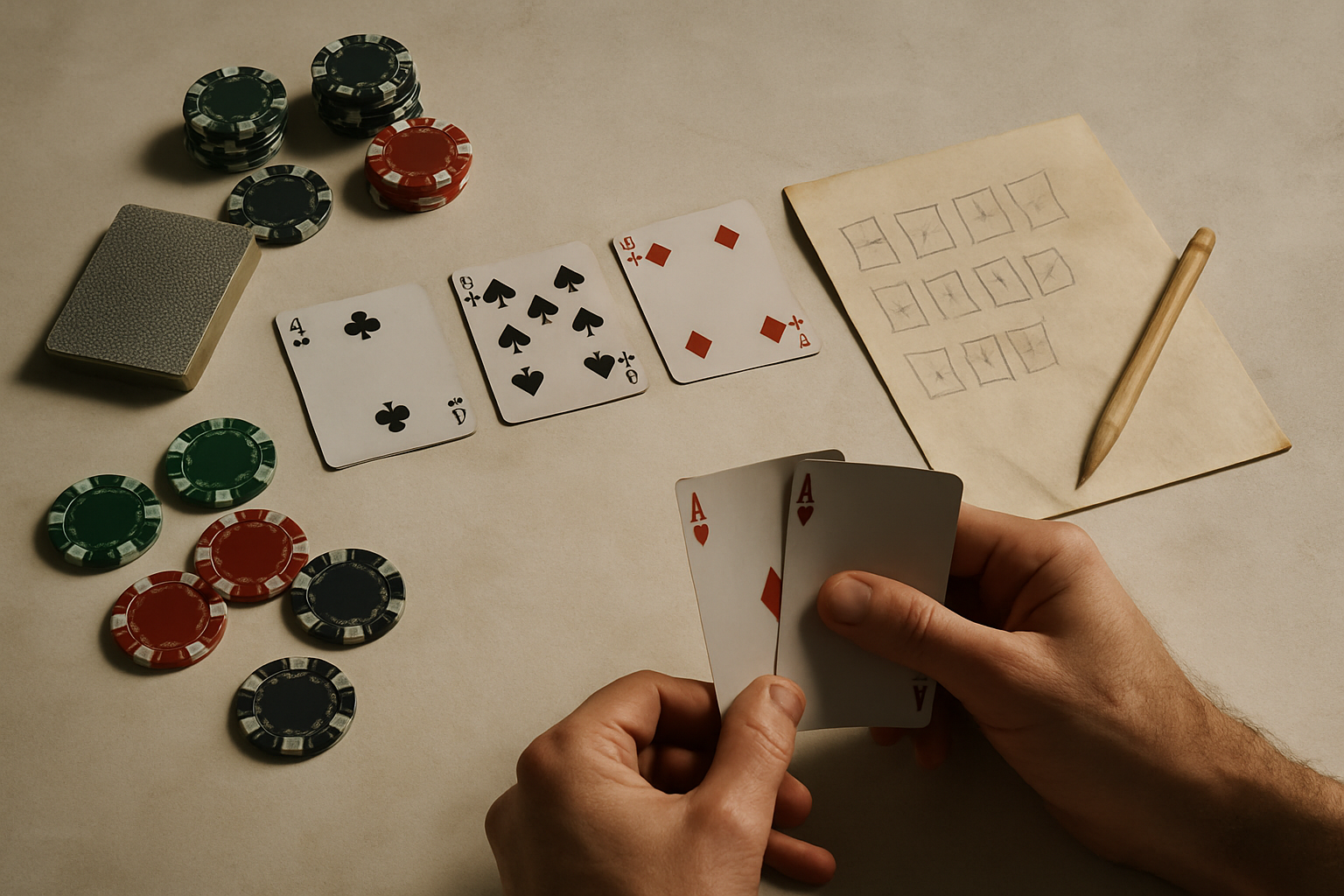Playing poker is not just about the cards you’re dealt; it’s also about understanding your opponents. In the world of poker, adjusting your strategy based on the type of player sitting across from you can make all the difference between winning and losing.
Whether you’re up against a tight-aggressive player who only plays premium hands or a loose-passive opponent who loves to see flops, knowing how to adapt is key. In this article, I’ll share valuable insights on how to tailor your poker strategy to exploit the weaknesses of different types of opponents.
From adjusting your starting hand selection to changing your betting patterns, mastering the art of adaptation can give you a significant edge at the poker table. Get ready to elevate your game by learning how to read your opponents and make strategic decisions that maximize your chances of success.
Understanding Different Types of Poker Opponents
In poker, understanding the various types of opponents you may face at the table is crucial for devising a successful strategy. Different opponents exhibit distinct playing styles that can significantly impact your gameplay.
Being able to identify and categorize these opponents allows me to tailor my approach and exploit their weaknesses effectively. Let’s delve into the common types of poker opponents:
- Tight-Aggressive (TAG) Players: TAG players are known for playing a narrow range of hands but betting aggressively when they do. They tend to fold to aggression unless they have a strong hand. Against TAG players, I adjust by being more cautious with my bluffs and avoiding marginal situations.
- Loose-Passive (LP) Players: LP players play a wide range of hands but are passive in their betting approach. They are more likely to call bets than to raise or fold. When facing LP opponents, I capitalize on their passive nature by betting for value with strong hands and avoiding elaborate bluffs.
- Loose-Aggressive (LAG) Players: LAG players play many hands and bet or raise frequently. They put pressure on their opponents with aggressive moves. To counter LAG players, I tighten up my starting hand selection, focusing on playing premium hands and exploiting their tendency to bluff.
- Rock Players: Rock players are extremely tight and passive, rarely betting or raising. They only play the strongest hands and are predictable in their actions. When up against rock players, I take advantage of their predictability by value-betting relentlessly and folding to their rare aggression.
- Maniac Players: Maniac players are highly unpredictable and aggressive, often making large bets and raises with a wide range of hands. Dealing with maniac players requires patience and strategic play. I look for spots to trap them with strong hands or to outmaneuver them post-flop.
By recognizing and adapting to the different types of poker opponents, I can tailor my strategy to exploit their tendencies effectively. This adaptability is key to maximizing my edge at the table and improving my overall success in poker games.
Adjusting Your Strategy Against Aggressive Players
When facing aggressive opponents in poker, it’s crucial to make strategic adjustments to counter their style effectively. Here are some key tactics to consider:
Responding to Overly Aggressive Betting
Against overly aggressive players who frequently make large bets or raises, I focus on playing a tighter range of hands. By folding weaker holdings and only continuing with strong hands, I avoid falling into traps set by aggressive betting.
Additionally, I look for opportunities to trap them by slow-playing my strong hands, letting them hang themselves with their aggressive plays.
Exploiting Aggressive Players’ Weaknesses
To exploit aggressive players’ tendencies, I utilize their aggression against them by inducing bluffs and maximizing value from strong hands. I manipulate their betting patterns by occasionally calling or trapping with medium-strength hands, enticing them to overcommit with weaker holdings.
By understanding their aggression, I can turn their strength into a strategic advantage, leading to profitable opportunities at the poker table.
Adapting to Passive Opponents
Passive opponents in poker tend to avoid aggressive plays and often check or call rather than bet or raise, allowing others to take the lead in the game’s action. To exploit the tendencies of passive players effectively, I adjust my strategy to maximize value and control the pace of the game.
Taking Advantage of Passive Players’ Tendencies
When facing passive opponents, I capitalize on their inclination to check or call by increasing my bets when holding strong hands. By doing so, I aim to extract more value from these opponents who are less likely to bet or raise themselves.
Additionally, I avoid unnecessary bluffs against passive players as they are more inclined to fold, making aggressive actions less effective.
Dealing with Tight Players
When facing tight players at the poker table, it’s essential to adjust your strategy accordingly. Tight players are cautious and selective with their starting hands, making it crucial to exploit their predictable tendencies. In this section, I’ll outline effective strategies for dealing with tight opponents to enhance your overall gameplay.
Here are some key tactics to consider when facing tight players:
- Patient Approach: I’d recommend adopting a patient approach when playing against tight opponents. Since they only enter pots with strong hands, avoid unnecessary bluffs and focus on playing solid hands to capitalize on their conservative nature.
- Value Betting: Tight players are more likely to fold to aggressive betting, so it’s important to maximize value from your strong hands. By making well-timed value bets, you can extract chips from tight opponents who are reluctant to risk their stacks.
- Observation and Adaptation: Pay close attention to how tight players play their hands. Look for patterns in their betting behavior and adjust your strategy accordingly. Exploit their tight range by widening your own range and putting pressure on their weaker holdings.
- Pick Your Spots: Since tight players are less likely to get involved in hands, choose your battles wisely. Avoid getting into unnecessary confrontations with them and focus on capitalizing on favorable situations where you have a clear advantage.
By implementing these strategies and staying adaptable throughout the game, you can effectively counter the playing style of tight opponents and increase your chances of success at the poker table.
Playing Against Loose Players
When facing loose players at the poker table, it’s essential to adjust my strategy accordingly. Loose players tend to play a wide range of hands and are more inclined to call or even raise bets. In this scenario, I need to be selective with my own starting hands and capitalize on their tendencies to overplay weaker holdings.
One effective approach against loose players is to tighten up my own range of hands. It’s crucial to wait for premium hands and strong drawing hands before getting heavily involved in pots. By doing this, I can exploit loose players’ propensity to play subpar hands and capitalize on their mistakes.
Additionally, I should focus on value betting against loose opponents. Since loose players are more likely to call bets with marginal hands, I can extract maximum value from my strong holdings by betting for value instead of trying to bluff them out of pots. This strategy allows me to build sizable pots when I have a strong hand and increase my overall winnings.
Moreover, bluffing against loose players should be done selectively. Since loose players are more willing to call bets, I need to choose my bluffing spots wisely and avoid unnecessary bluffs. It’s crucial to recognize when my opponents are likely to fold and when they are inclined to call, adjusting my bluffing frequency accordingly.
In essence, playing against loose players requires a mix of patience, selective aggression, and value betting. By tightening up my starting hand selection, focusing on extracting value from strong hands, and bluffing strategically, I can exploit loose players’ tendencies and enhance my chances of success at the poker table.





